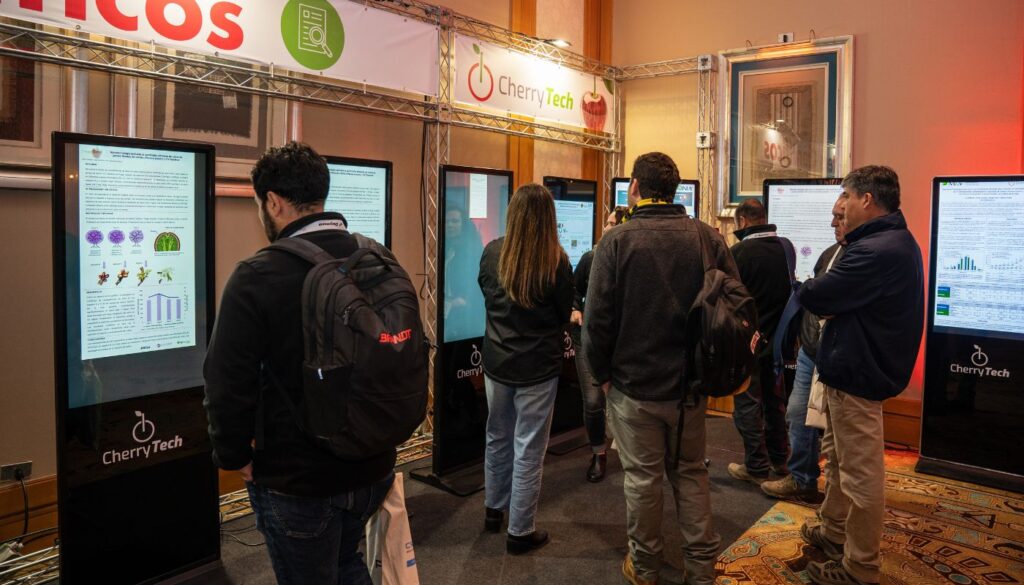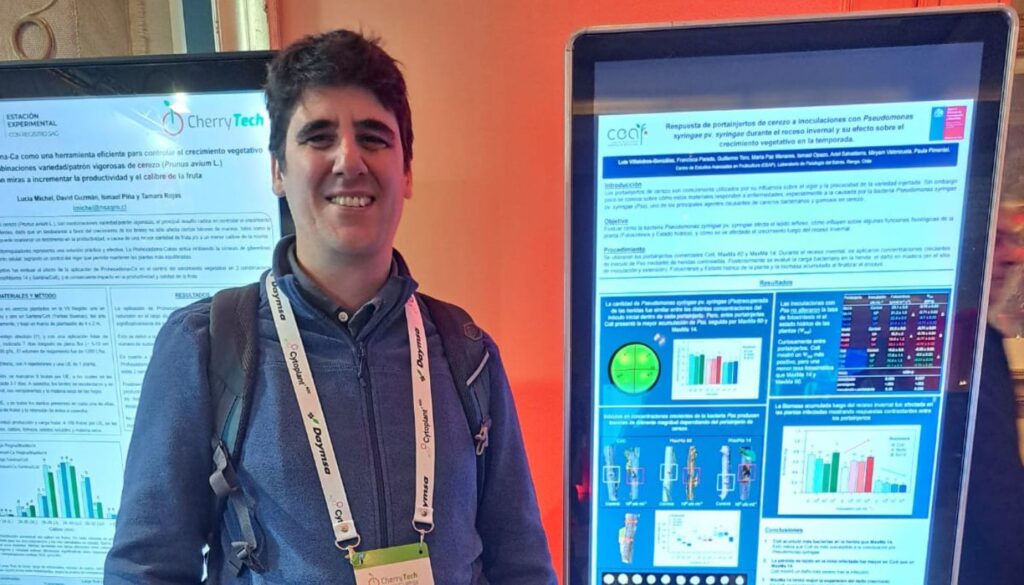The project was carried out by the Center for Advanced Studies in Fruit Growing (CEAF).
On June 17, as in the previous edition of this successful event, research was presented in digital poster format, addressing crucial topics related to cherry cultivation.
The most important technical event of the year for the cherry industry, CherryTech 2025, celebrated its third edition with great success. In addition to three master classes and three forums led by high-level specialists who shared their analysis on various aspects of the sector, a series of research projects were presented in poster format, attracting the attention of more than 1,600 attendees.
Areas of interest included the application of biostimulants, natural polyphenols to improve cherry tree resilience to climate change, artificial intelligence and cherry flower bud quality, and nanotechnology applied to the efficient supply of calcium to flower buds, among others.
These posters not only provided an opportunity for researchers to share their findings, but also for attendees to interact directly with the authors, delving into the details of each study.
The award went to the poster presented by Luis Villalobos, a biochemist with a PhD in Agricultural and Forestry Sciences and Veterinary Medicine, and a member of the Center for Advanced Studies in Fruit Growing (CEAF). He was one of the authors of the paper “Response of Cherry Rootstocks to Inoculations with Pseudomonas syringae pv. syringae During the Winter Recess and Its Effect on Vegetative Growth in the Season.”

The study evaluated the response of commercial cherry rootstocks to inoculations with different concentrations of Pss during winter, analyzing physiological variables such as vegetative growth, water status, and photosynthetic rate, with the aim of understanding how the rootstock may influence disease progression and plant physiology.
“From my personal perspective, participating in events like CherryTech represents a valuable opportunity to gain in-depth knowledge of the technical challenges facing cherry production in Chile, covering aspects ranging from field management to post-harvest and distribution logistics,” said Luis Villalobos.
“This type of meeting not only allows for knowledge to be updated, but also fosters exchanges between researchers, advisors, and stakeholders in the production sector, creating a fundamental space for dialogue and collaboration. I am convinced that the convergence between science and production is key to transforming agricultural challenges into innovative, evidence-based solutions. Therefore, receiving recognition in this context is a source of personal pride, and also a reflection of the collective work of the CEAF scientific team,” added the representative of the winning poster.
This opportunity to unite scientific research with contingent and technical knowledge was highly valued by attendees and demonstrates that creating a platform for knowledge exchange and promoting new technologies facilitates connections and motivates more people each year to participate in high-value events like CherryTech 2025.

